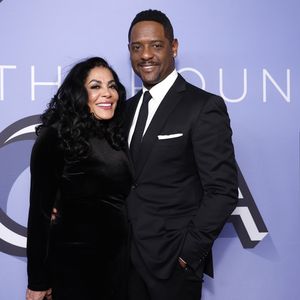
When it comes to a job search, we're definitely Team Work Smart Not Hard. And any way you can automate certain aspects of your job search can be beneficial. Not only does it save you time and stress, but it can also lead to better results, especially those related to job post outreach.
We've all seen and read insights about AI and how you can use this to communicate and write better, and cold-emailing is one way you can incorporate AI in order to do so. Here's all you need to know about this and the scripts you can try out in order to land the job you want:
What Is Cold Emailing?
A cold email is something sent to someone you do not know or have no previous real-life connection with. It was traditionally used in sales and business to sell a product or spark interest in a product or service, but today, job seekers can use it to find out about new job opportunities, connect with recruiters, managers, or potential employers, or find out more information about an open role.
The method can be a hit or miss, since sometimes, cold emails end up in spam or trash, especially when the recipient receives hundreds of emails a month and barely knows you. But in some instances, it can lead to big results, like the time this entrepreneur landed an initial $250,000 in startup funds simply by sending a cold email to a potential investor.
Combined with networking and finding ways to interact with a person that’s not necessarily one-on-one but relevant, cold-emailing could be your ticket to getting at least a toe in the door when you want to apply for a certain job at a particular company, or you want to break into a new industry.
Where To Start With Cold Emailing
1. Humble Yourself.
I actually got my gig at xoNecole via cold email. I had a lot of experience at the time working in mostly newsy journalism, and I saw that xoNecole was taking submissions. Interestingly enough, I'd become familiar with the founder—through a personal online blog she had at the time—years before she'd launched this site. While we both worked in media and entertainment, we did not know one another personally, nor had I ever met or networked with her. It was a bit serendipitous that I'd end up cold-emailing to write for xoNecole.
In that moment, I had to humble myself. Though I'd worked for major publishers and had done a bit of featured writing, I was most known for formal, business-toned Associated Press-style stories, and this site's style was more down-to-earth, conversational, and free-flowing. I sent the email, thinking, "What's the worst that can happen? A rejection? No response?"
Well, five years later, here I am, an associate editor, after starting out as a contributor. I simply shot my shot to the appropriate email address, following the appropriate process detailed on the website, and then once I got a few stories published, I asked if they had any need for editing services.
2. Do Your Research.
As I stated before, I read their website to find out how I could pitch myself and the correct email address to contact for that purpose. You'll have to do the same. Do a bit of online digging and find out, first, if there is a formal process to apply for what you need or to get the information you're looking for.
Sometimes, cold emails end up in the trash because they simply went to the wrong person or the sender did not follow simple directions that are part of an already-established process. For example, if the company's website clearly states that you should contact the HR department at a set email address, it might not be wise to first send a cold email to your potential direct manager. Or, if the company requires a certain format for requests or a word count limit for emails, you might want to know that before sending your 1,000-word synopsis of why you'd be great for a job.
Another big no-no is sending an email to someone who has nothing to do with your end result. This is a common and easy mistake to make.
If your inquiry is about an IT role but you're sending it to the marketing department, again, it's easy to simply disregard it. Professionals have limited time, and some can barely manage emails from people they know, so make it harder for them to ignore you by finding out exactly who you need to be contacting.

fotostorm/Getty
3. Be sure the subject line is concise, relevant, and punchy.
Put yourself in the shoes of the stranger you're emailing. Let's say you want the marketing director position that you saw listed on LinkedIn. Well, think about the first thing they'll see when they open their inbox. What would get their attention? What keywords can you use so that they can bookmark and come back to your email if needed? How can you clearly but quickly note why they should open the email in 7 words or less?
As an editor who manages hundreds of pieces of content, dozens of contributors, and gets countless pitches from people I don't know (and probably will never meet), the subject line can make or break whether I actually even read the email; great pitch or not.
Here are a few great subject lines to tweak and make your own. (And sis, please do not just copy and paste these. Customize with your own voice and savvy):
- Re: Job Title: - Your Name, Current Title (You don't have to list the company here)
- Re: Job Posting Number: Job Title, Your Name
- Re: Job Post Inquiry - Your Name
- Job Title Seeking New Opportunity
Here are a few creative subject lines that might be winners if you have a gift of gab. Be sure they're not too salesy, ingenuine, or cheesy, considering the type of job and the industry you're in:
- [Current Job Title + Current Company] – I'd Love To Work With You
- Job Applicant Referred By [name of referral] for Job Title at Company (Make sure this is true.)
- Here's Why [Your Name] Would Be The Best [Job Title] For Your Company (This is headline-style writing. Take a cue from news stories and commercials and get creative with this one. Again, make sure the tone is appropriate and you have an actual knack for this.)
- 10 Things You Didn't Know About [Your Name], [Job Title that references skill needed for the role that you can actually do] (This is another headline-style subject line. Again, only use this one if you're savvy and it's appropriate.)
- Make a great decision before your 2nd cup of coffee. Hire me (give reason)
- Award-winning [Current Job Title] looking for new opportunities
- [Your Name] – the best addition to your team
You can also use ChatGPT for this. Simply use an online platform or an app, type in a prompt or other context around what you want to communicate, and allow AI to do the work. Again, you'll still need to customize this for your own voice and tone, and be sure to proofread it as well.
Tech should complement human intelligence and skill, not replace it, and trust me; people will know when something has been pre-written or scripted and is not authentically you.
What To Include In A Cold Email
There are several key approaches, but they all have a few things in common. First, you want to be sure to get to the point early in your email (i.e., in the first or second sentence), introducing yourself, your skills, and what you need (i.e., applying for the job, requesting a 5-minute virtual meeting, more information about the role, etc).
Be direct and lean heavily into using specific keywords (those major terms about the job, company, or industry that were included in the job post or company's website). Master saying more with fewer words. Address the person by name, but if you don't know it, start with a general "Good morning," or "Good day."
Second, the email should be no more than two to three short paragraphs (maybe four to six sentences each). If they want more information, they will ask for it in a follow-up email. Give them just enough to intrigue or spark interest and make sure, again, that the information is super-relevant to your end goal and in consideration of their time. Here's a good starting point for your opening paragraph:
Good Day,
I am [name], an award-winning [title] who has a passion for [thing one, thing two, and thing three], which is why I'd be a great fit for the [job opening/position]. I have worked in [industry] doing [specific value add 1, value add 2, value add 3] for [time period], and I want to bring those skills to your company.
Reference something you read about the company or that person that inspired you to want to work there or mention a problem that you'd like to have a hand in solving. Try this:
I recently read this article where you spoke about [3-4 words describing what was intriguing] and thought this is a leader I'd love the chance to work with.
I've been following the news of your company's public offering and would like to be part of its new strategy to [fill in the blanks here].
I met you at the Leaders of Tomorrow gala, and you follow a cause that's dear to my heart as well: youth leadership and mentorship.
Long emails about your experience, why you're the best at the job, etc., might get it tossed. People often graze emails and skim because, again, time is limited.
Third, add in key, short bullet points elaborating on your relevant experience, interests, links to your work, or other applicable aspects of your talent and experience that make you competitive in your industry. If you've recently led a campaign, send a link to the actual visual outcome. If you have a professional website, include the link to that. If you've earned awards, mention them.
Again, keep the bullet points short and sweet. Stay away from vague words like "worked on" versus "led the team," or "helped advance," versus "oversaw a $1 million growth in sales." For example:
This year, I:
- Led strategic teams for a 30% increase in sales year over year
- Landed a spot on the "Top 30 Under 30 In Sales" To Watch" list for the National Association of Sales Professionals
- Completed three [list certifications or other educational background insights that were recently upgraded or obtained.)

fotostorm/Getty
And don't forget to list your full name, email address, and the best way to contact you at the bottom of the page. You can attach your resume as well, but be sure this is part of their formal process. Sometimes, your LinkedIn information can suffice, and you won't be sending them large file attachments (which some people really don't like.)
Once you're done with the email, create a template so that you can simply plug the copy in when you're sending multiple emails to different people. (You can also simply save the copy as a Word or Google document and copy and paste when needed.) Avoid bcc'ing or blinding sending mass emails. It's not a good look, and you can easily embarrass yourself by referencing the wrong person, job, or company.
Be strategic by sitting down and listing companies, key people, and your "why" for each. This way, you can narrow things down so that you're not wildly overextending yourself in the process. Set a time/date for doing this, and pace yourself.
Cold-emailing should be part of a larger strategy that includes actual networking, volunteering, socializing, researching, enhancing your skills, and doing quality work in the meantime. Remember, this is simply something to add to your arsenal to put you that much closer to getting the gig.
Let’s make things inbox official! Sign up for the xoNecole newsletter for love, wellness, career, and exclusive content delivered straight to your inbox.
Featured image by Goodboy Picture Company/Getty Images
Your December 2025 Monthly Horoscopes Are All About Surrender & Alignment
December is about letting go. We end the year with the need for more peace, reflection, and rejuvenation, and that is exactly what December is providing for us. The Sun is in Sagittarius, and anything is possible. This is the month to believe in that and to know that the universe is supporting you. With a Supermoon in Gemini as we begin the month as well, we have an opportunity to gain the closure we have been looking for this year and to wrap up old projects, ideas, and communication breakthroughs.
This is the month to make your peace the priority and let go of trying to control the way the tides are turning. Trust in your new beginning, and give yourself time to prepare for it this month.
A big part of the clarity that is coming through this month is due to Neptune going direct in Pisces on December 10, after being retrograde here since July. With Neptune now direct, we are able to see our inspiration and creativity a little more clearly, providing the perfect energy for dreams and manifestation to be built upon. The smoke is clearing, and it’s up to you to decide what you want to do with this newfound clarity that this transit is bringing. Mercury also moves back into Sagittarius on December 11, which is great for communication and clarity, and the adventures you were trying to see through at the beginning of November come around for you again with greater purpose and support.
On December 15, Mars enters Capricorn until the end of January 2026, and this is the extra push we need to make important changes and to be on the path towards greater abundance, stability, and prosperity. Mars in Capricorn takes care of business, and we have extra energy at our disposal during this time to do so. This transit is an ideal time to focus on your career or financial goals for next year and to start putting some of these plans into motion now. A few days later, we have the New Moon of the month, which will be in Sagittarius on December 19, and this is the perfect New Moon to manifest.
The energy is high, magic is in the air, and it’s all about moving forward with the new beginnings that are inspiring you and bringing you joy to think about right now.
Capricorn Season officially begins on December 21, and this earth sign energy is how we heal, gain closure, and build new foundations in our world. With Venus also moving into a Capricorn a few days later, there is something about peace, prosperity, and security that we are gaining in life and in love as we close out the year, and this is what we need right now. This month is about reflecting on what was, letting go of old hurt, and renewing. December is an ending and a new beginning in one, and there is magic in this space to be created.
Read for your sun and rising sign below to see what December 2025 has in store for you.
 AriesKyra Jay for xoNecole
AriesKyra Jay for xoNecoleARIES
December is a full-circle moment for you, Aries. You are seeing the gifts in your world and have a lot of gratitude for the way things have come about for you as of late. There are culminations in your world that are providing you with more abundance, stability, and community, and you are exactly where you are meant to be this month. With the Sun in a fellow fire sign and in your 9th house of travel for most of the month, December is a good time to get out of your comfort zone, explore the world around you, and get your body moving.
Mars, your ruling planet, also makes a change and moves into Capricorn on December 15, which will fuel your inspiration and power in your career space. You are making a lot of professional progress as we close out the year; however, make sure to be more mindful of your competitive drive right now. The New Moon on December 19 is the perfect opportunity for you to create some new plans and goals when it comes to traveling, education, and where you want to gain some new inspiration in your world. Overall, this is a month of things coming together for you serendipitously.
 TaurusKyra Jay for xoNecole
TaurusKyra Jay for xoNecoleTAURUS
December is about trusting your intuition, Taurus. You have a lot on your mind this month, and it’s best to delegate, communicate, and allow yourself some relief by opening up to someone and not feeling like you have to hold everything in. As we begin the month, we have a Supermoon in Gemini happening in your house of income, and the plans and projects you have been building here come to fruition for you now. This is the time to gain clarity on your financial world and to take a look at what spending habits you want to let go of here as well.
With Venus in your 8th house of shared resources for most of the month, you are doing a cleanse on your commitments, partnerships, and business ventures. You are taking a look at what you want to dedicate yourself to in the future, and what commitments you may need to let go of now in order to be in the space you truly want to be, both financially and within some of your relationship dynamics. Before we end the month, we have a New Moon in this same area of your chart, and it’s time to look at the opportunities that are presenting themselves and to trust your internal guidance system to lead you forward.
 GeminiKyra Jay for xoNecole
GeminiKyra Jay for xoNecoleGEMINI
You are moving forward fearlessly this month, Gemini. December is your month of love, passion, and dignity, and you are owning the light that you shine. We begin the month with the last Supermoon of the year, happening in your sign, and you are stepping up to the plate. You are showing up, owning how much you have grown this year, and allowing yourself to heal while also acknowledging that you have done your best and you deserve to have fun in the midst of the changes you are creating.
Mercury, your ruling planet, is officially out of retrograde, and you can use this energy to the fullest potential now. With Mercury in your 7th house of love, it’s time to speak from the heart and to talk about the things that matter and that are inspiring you right now to your loved ones. You never know what kind of epiphanies you may have when you open up the conversation to others. Before the month ends, you have a New Moon in this same love area of your chart, and this New Moon is all about manifesting romance, commitment, and abundance in your world.
 CancerKyra Jay for xoNecole
CancerKyra Jay for xoNecoleCANCER
December is an opening for more love, more joy, and more freedom in your life, Cancer. You have come to a place where you hold so much gratitude in your heart for where you are today and where your heart is shining, and things come together for you with more ease right now. With the Sun in your 6th house of health, work, and daily routines for most of the month, you are getting your ducks in a row while also putting more energy and effort into taking care of yourself, your priorities, and your well-being. This month surprises you in many ways, and it’s because you are showing up.
Mars and Venus both move into your house of love, relationships, marriage, and abundance this month, and you are making strides in your love life. You have both of these opposing forces on your side and are being recognized for the love you are while also receiving the love you want. This month, overall, is about focusing more on the positives in your world and letting your heart have its joy. Before December comes to an end, there is a New Moon in Sagittarius, and this is the perfect opportunity to create the plans you want to see through next year, especially when it comes to your work life, colleagues, business ventures, and health.
 LeoKyra Jay for xoNecole
LeoKyra Jay for xoNecoleLEO
The scales of karma are balancing, and they are balancing in your favor this month, Leo. December is your month of truth, and of seeing it clearly in your world. The Sun is in your house of romance, pleasure, and happiness for most of the month, and it’s time to relax, be in the present moment, and allow what is meant to be, to be. With a Supermoon in your 11th house of manifestation as December begins, this is a powerful month for seeing your dreams come to fruition, and for feeling like the intentions you have set this year are finally here for you now.
Mars also moves into your 6th house mid-month, and this is the perfect energy to have to move into the new year. You have extra energy at your disposal right now and are feeling fearless with what is possible for you and your daily routine. Before the month ends, we also have a New Moon in a fellow fire sign, Sagittarius, and this is a breakthrough moment for you and your heart. December, overall, wants to show you how loved and supported you are and will be doing so in magical, unexpected, and concrete ways.
 VirgoKyra Jay for xoNecole
VirgoKyra Jay for xoNecoleVIRGO
December is a month of victory, Virgo. You are showing up and experiencing some new successes in your world that move you forward on your path in life. With a Supermoon in your 10th house of career as we begin the month, the effort and intentions you have made this year come into full bloom, and you are being recognized for who you are and the good work you have done. This month is all about showing up and allowing yourself to be seen and loved, knowing that you deserve the support and opportunities you are receiving.
Mars moves into Capricorn on December 15, which brings the passion and excitement into your love life, hobbies, and little pleasures in life that light you up. You want to have fun this month and are going to be walking into the new year with this fearless, happy, and spontaneous energy within you. Before the month ends, Venus also enters Capricorn, and in this same area of your chart, you have a lot to look forward to and believe in right now. Overall, December wants you to be happy and will be doing everything possible to make that happen for you. This is your month to shine, Virgo.
 LibraKyra Jay for xoNecole
LibraKyra Jay for xoNecoleLIBRA
December is a month of opportunity for you, Libra. New doors open, and you are financially making breakthroughs this month because of it. December begins with a Supermoon in your 9th house, and you are getting a clearer view of where you have been making strides in your life and how it has all brought you here to this present moment of freedom. This month is showing you what happens when you are fearless with your purpose and when you believe in yourself and what you are worthy of.
Moving further into December, Mars moves into your 4th house of home and family mid-month, and you are closing out the year in your safe spaces. You are spending more time with your loved ones and taking the time to quiet your mind and listen to what your heart has been telling you. Before the month ends, we have a New Moon in Sagittarius, happening in an area of your life that deals with communication. This is a great time for getting the answers you have been looking for and for feeling more clear-headed and confident about the decisions you are making as you move into the new year.
 ScorpioKyra Jay for xoNecole
ScorpioKyra Jay for xoNecoleSCORPIO
Patience is a virtue this month, Scorpio. December is all about remaining patient and vigilant with what you are creating in your world, and knowing that the universe has your back. It’s time to be reminded of the power of hope, and this month is an opening to greater clarity in your life. There is a lot of energy in your financial zones right now, and this is providing you with new opportunities and new insight; however, the speed at which things come about for you may feel daunting. Keep your head up and eyes focused on what you want and know that you are more than worthy of receiving it.
With Mercury in your 2nd house of income this month, December is a good time to plant new seeds and to think about where you want to be financially a month from now or even a year. This month is asking you to think bigger and to think more long-term so that you can set the appropriate plans into motion now. We also have a New Moon in your house of income before the month ends, and this is when you will see more of your dreams come to fruition in this area of your life, and have more opportunities to build. Overall, December will be teaching you a lot, Scorpio.
 SagittariusKyra Jay for xoNecole
SagittariusKyra Jay for xoNecoleSAGITTARIUS
Sagittarius Season is here, and there is a lot in store for you this month, Sag. December is all about what you are dedicating yourself to. It’s about setting your intentions and putting the work in to back up your dreams, and about getting things in order so that when the new beginnings come, you are ready for them. The Sun and Venus are in your sign for most of this month, and there are a lot of eyes on you right now. You have the potential to create a new beginning for yourself, and it’s time to invest in yourself, your love life, and your dreams.
Mercury moves into Sagittarius on December 11, and this is giving you another opportunity to see through some of the plans that you had initiated in November. Mercury was retrograde in your sign last month, and there may have been some disruptions to your vision and plans for the future, and now this energy is turning around for you. Before the month ends, we also have a New Moon in Sagittarius, and you are walking through new doors fearlessly. You are catching others by surprise by your growth this month, and you are thinking a lot about your purpose, future, and plans for the new year.
 CapricornKyra Jay for xoNecole
CapricornKyra Jay for xoNecoleCAPRICORN
December is all about the vision, Capricorn. You are moving through a lot of changes and transformations this month, yet they are giving you a chance at a new beginning in the process. You are focused more on the future and what goals you want to manifest for yourself right now, and are ready to let go of what hasn’t been working for you. With the Sun in your 12th house of closure for most of December, this is your time for healing, but remember, healing doesn’t have to be isolating or boring; you can thrive while you renew, and you are this month.
Mid-month, the excitement picks up for you, and you are feeling more energized than you have in a while. Mars moves into Capricorn until the end of January 2026, and you are being proactive with your goals, intentions, and passions. You are a force to be reckoned with this month, and you are making things happen for yourself with confidence. Capricorn Season officially begins on December 21 this year, and this is definitely speeding up your healing process. You are breaking free from what was, and with Venus also moving into Capricorn before the month ends, you are leaving this year in high spirits and with love opening a new door for you.
 AquariusKyra Jay for xoNecole
AquariusKyra Jay for xoNecoleAQUARIUS
December is all about community, creativity, and manifestation, Aquarius. This is the month to work together with others to help bring your dreams to life. You are in a space of inspiration, empowerment, and beauty, and are creating more of this energy around you and in your world. Look out for what support comes your way this month and know that you don’t have to do everything alone to succeed. With the Sun in your 11th house of manifestation and friendship, your intentions are coming to fruition, and it’s time to celebrate with the people you love and to own how far you have come this year.
On December 19, we have a New Moon in Sagittarius, lighting up your life in all of the best ways possible. This is your New Moon of freedom, victory, and magic, and you are seeing new beginnings appear that you were once just hoping for. Before the month comes to an end, Venus moves into your 12th house of closure, and after an active and successful month, you are ready to relax, heal, and give your heart some of the attention it has been asking for. You are moving into the new year with the need to release and renew what hasn’t been working in your relationships, and you are finally ready to.
 PiscesKyra Jay for xoNecole
PiscesKyra Jay for xoNecolePISCES
December is a big month for you, Pisces. You are making some huge accomplishments this month, and are feeling like everything you have been through this year has been worth it for these moments that are coming to fruition for you now. The Sun is in your 10th house of career and reputation for most of the month, and this is where a lot of your focus is right now. You are claiming your successes and putting yourself out there in ways that not only serve you, but that inspire others as well.
Neptune officially goes direct on December 10, after being retrograde in your sign since July, and you are finally seeing things a little more clearly. You are feeling renewed inspiration and passion in your life, and your intuition is your strongest asset right now. Before December comes to an end, we also have a New Moon in your 10th house of career, and what happens now not only changes things for you in the present, but it also opens new doors and what is possible for you in the new year as well. Overall, you are on top of your game this month and are owning the joy and empowerment you feel.
Featured image by Kyra Jay for xoNecole
Don Benjamin On New Projects, Family & How He And His Wife Healed After Public Split
Actor and model Don Benjamin continues to expand in his career while also being a present husband and father. We first learned of the model in 2013, competing on America's Next Top Model Cycle 20, and now he's starring in major films like the recent Jordan Peele movie HIM and Adopted 2.
He was even the leading man in Cardi B's latest music video "Safe," which also features Kehlani. In an exclusive xoNecole interview, Don opens up about his family and this phase in his life.
"Honestly, the funny thing is, it's just like any other phase," he admits. "I just focus on work and growth and leveling up. I'm super excited about this moment because now, I'm finally tapping more into my acting side of stuff." He also shows off his acting skills on social media. Don, along with his wife, Liane V, often shares cute family skits on their respective Instagram and TikTok pages.
The couple share two kids, 2-year-old daughter Zaia Sky and Zaiden, who they had in June 2025. According to Don, Zaia is already following in his footsteps. "She's already doing more modeling jobs than me as of lately, and we want to get her in some acting. She loves the camera," he says. "It'll be nice to see if she follows in my footsteps, and I can kind of help line some things up for her."
Don and Liane have been married for four years, but had a very public breakup the year before. The Scared Famous star reveals how they did the work to heal and move forward together.
"We had our time to separate and work on self-growth, things that I needed to do for myself as a man, and working with life coaches and therapists, and she got the time to do what she needed to do. So when we came back together, we were in the right space mentally. We got a relationship coach that we can go through things with and talk about and work on and these things were important for us. Now, over the years, I feel like that actually helped us come closer together. That moment helped us come closer together."
"We had our time to separate and work on self growth, things that I needed to do for myself as a man, and working with life coaches and therapists, and she got the time to do what she needed to do. So when we came back together, we were in the right space mentally."
He continues, "I did what I had to do to understand [that] as a man, I never really had any male guidance in my life. So it was able to align me with the right coaches and pastors and therapists and people that I needed to align with to work on things that I had been dealing with in life. Then she got the space that she needed as a woman to work on her independence.
"We came back together strong, and now we were able to get married in the right space. A lot of times, people jump into marriage when they're not fully healed or in the right headspace. So we were able to get married in that right space. For us, it's been a beautiful thing, and we're able to use that as as an example."
Don also believes it's important to set an example for their kids, especially when it comes to love and respect. While the actor grew up without his dad, he has made it his priority to instill love in his kids by showing up for them and giving them words of affirmations.
As far as what's next for Don, he is starring and executive producing a paranormal activity film titled, holySmoke. "I'm loving the drama and horror space right now," he says.
"I always love a good romantic comedy, but right now. I seem to be getting reeled into all these horror films and thrillers and dramas."
Let’s make things inbox official! Sign up for the xoNecole newsletter for love, wellness, career, and exclusive content delivered straight to your inbox.
Feature image Nikita Melvil









